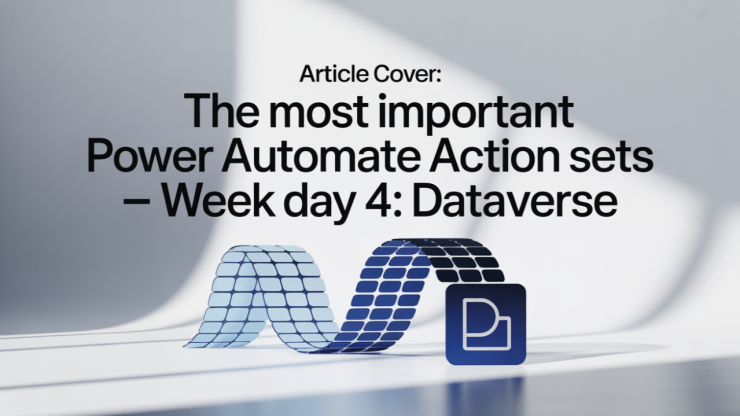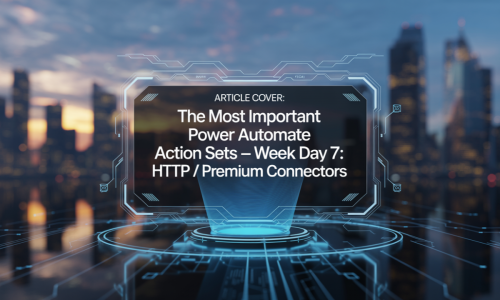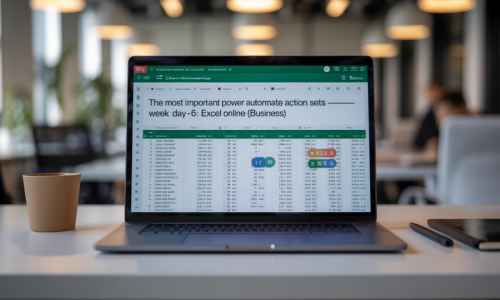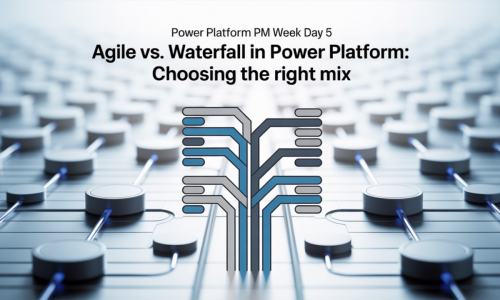The Most Important Power Automate Action Sets – Week Day 4: Dataverse

-
Admin Content
-
Oct 27, 2025
-
164
Why Day 4 Is All About Dataverse
If you've been following our Power Automate action set series, you already know that each day covers an essential component in the Power Platform ecosystem. Day 4 is dedicated to Microsoft Dataverse — the secure, scalable, and versatile data platform that powers Dynamics 365 and countless custom business applications.
Dataverse is not just a storage layer; it's a robust data engine that enables deep integration with apps, AI models, and automation workflows. In the context of Power Automate, Dataverse becomes a powerful ally for creating dynamic, data-driven flows. Whether you're triggering flows based on data updates, executing complex operations, or simply moving data between systems, the Dataverse connector offers one of the richest and most essential action sets.
Understanding how to leverage Dataverse actions in Power Automate is critical for any solution architect, developer, or power user working with Microsoft's cloud ecosystem. This article will explore the key Dataverse actions, explain when and how to use them, and highlight some best practices to ensure your flows are fast, secure, and future-proof.
Understanding Dataverse and Its Connector in Power Automate
The Microsoft Dataverse connector (formerly known as Common Data Service) provides access to a comprehensive set of data operations across environments in the Power Platform. It enables secure integration with Dataverse tables and exposes both standard and custom actions for automation workflows.
There are two versions of the Dataverse connector:
- Current Environment (CE) connector – supports embedded actions and triggers within the same environment as the flow.
- Dataverse (legacy) connector – requires manual environment selection and is less commonly used now.
This connector allows authentication through OAuth, Client Certificates, or Service Principal authentication using Microsoft Entra ID (formerly Azure AD). It supports multiple secure scenarios, including backend integrations and low-code environments.
The connector includes triggers (e.g., when a row is added or modified) and actions (e.g., create, update, delete, relate data), enabling full CRUD functionality and advanced operations such as calling bound or unbound actions and performing changesets (transactions).
For full documentation, Microsoft provides a reference at Dataverse Connector Overview.
Key Power Automate Actions in Dataverse
Power Automate exposes an extensive set of Dataverse actions, and here are the most crucial ones to understand:
Add / Update / Delete Rows
- Add a new row: Inserts data into a specified Dataverse table.
- Update a row: Modifies a single row based on its unique ID.
- Delete a row: Removes a row by ID. Use with caution, as this cannot be undone.
These actions support both standard and custom tables, and are the building blocks of most flows that interact with Dataverse.
Get / List Data
- Get a row by ID: Retrieves a specific row using its GUID.
- List rows: Returns multiple rows that match a query. This is often used with filters, pagination, and sorting.
These are especially powerful when combined with the Filter Query (OData) syntax to minimize data volume and enhance performance.
File and Image Management
- Upload/Download file or image: These actions handle binary columns in Dataverse tables — a capability especially useful in HR, sales, or case management apps.
Upsert Operations
- Upsert a row: Tries to update an existing row based on alternate keys; creates one if it doesn’t exist. It’s a powerful way to maintain data consistency with minimal logic.

Bound vs. Unbound Actions, and Custom APIs
Dataverse supports complex business logic through actions, which can either be bound to an entity (table) or unbound (global). Power Automate can trigger both types:
- Perform a bound action: Executes predefined logic tied to a specific table (e.g., “Win Opportunity” on the Opportunity entity).
- Perform an unbound action: Executes global logic, not tied to a specific record (e.g., sending a notification or initiating a background process).
Additionally, you can call Custom APIs that you've defined in your Dataverse environment. These are ideal when standard actions don’t meet your business logic needs.
It’s worth noting that these actions support output parameters and complex input types — making them suitable for enterprise-grade scenarios where logic needs to be abstracted away from the Power Automate designer.
Changesets & Transactional Requests
One of the more advanced capabilities is the Perform a changeset request action. This lets you bundle multiple Dataverse actions (e.g., create/update/delete) into a single transaction.
Benefits of Changesets:
- Atomicity: If one operation fails, the entire set is rolled back.
- Consistency: Ensures related data changes happen together.
- Performance: Reduces the number of individual HTTP requests.
This is particularly useful in master-detail scenarios — such as creating a sales order and its line items — where partial success would result in data corruption.
Changesets are only available in flows that use the current environment connector, and they must contain supported actions only (e.g., Add row, Update row, Delete row).
Best Practices and Performance Tips
Working with Dataverse in Power Automate comes with some considerations:
- Use OData filters in “List Rows” to retrieve only necessary data.
- Avoid loops when possible — batch operations or use Changesets.
- Watch out for API call limits (6,000 calls per 5 minutes per connection).
- Handle concurrency by enabling concurrency control on loops or using Upsert operations.
- Monitor performance using Power Platform admin analytics and consider using Dataflows for large data sync scenarios.
It's also advisable to use alternate keys for integrations, rather than hard-coded GUIDs, which can vary between environments.
Wrapping Up & What’s Next
Dataverse is the backbone of Power Platform applications, and understanding how to use its Power Automate connector effectively can elevate your automation capabilities significantly. From standard CRUD operations to advanced transactional and custom logic, the Dataverse action set is indispensable for any solution that deals with structured data.








